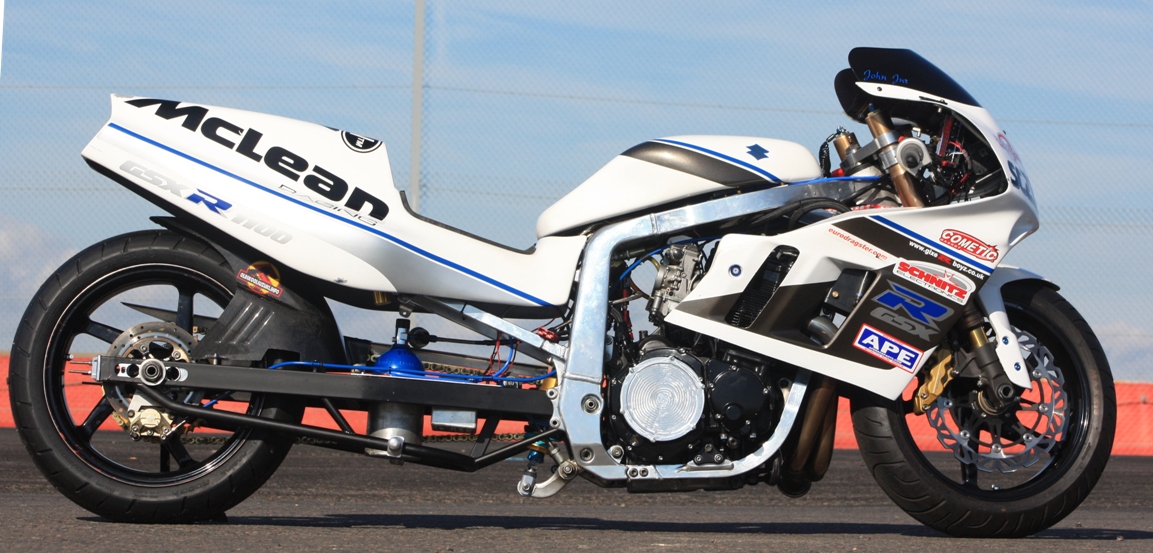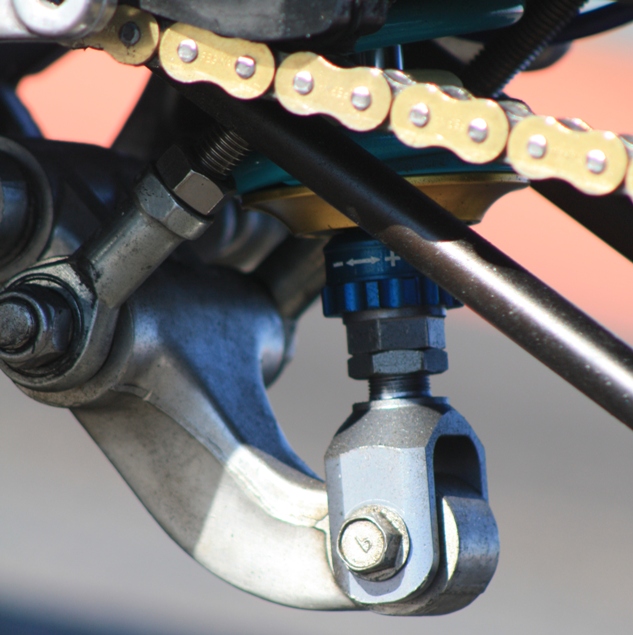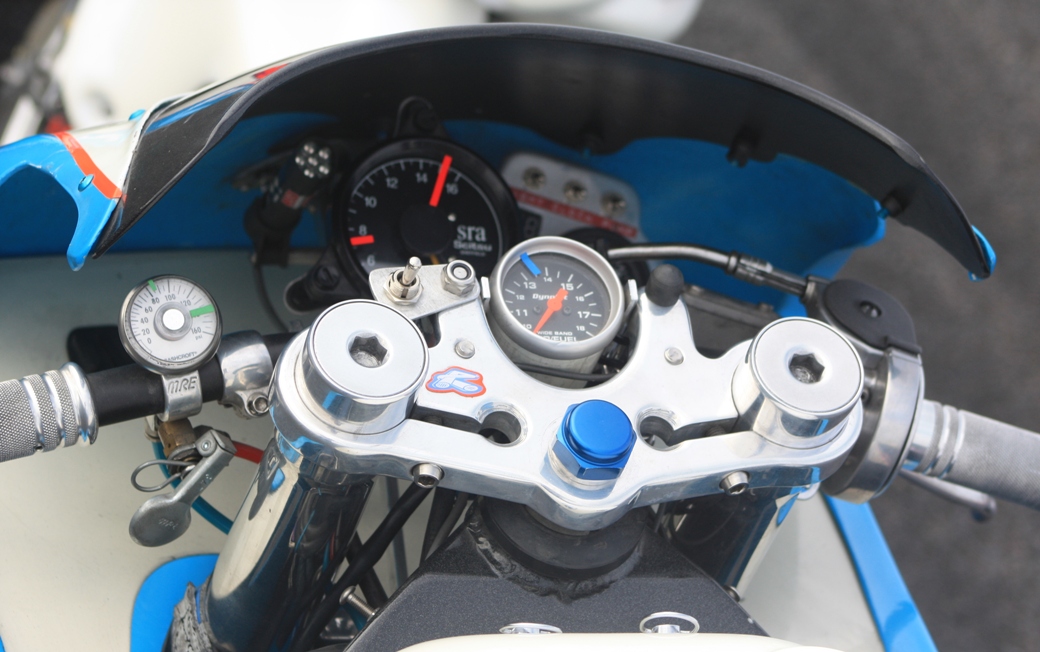Motorcycle Modifications: Swapping Handlebars and Footpegs
Swapping handlebars and footpegs for an improved riding position is all well and good, but what happens if these measures just aren’t drastic enough for your body profile?
Changing bars will make very little difference if you’re of a height that means you can’t reach the floor with your feet.
So we need to not only look at the relation between the handlebars, seat and footpegs, but also the feet and the floor! This is perhaps most important for those people who haven’t been riding very long, have little confidence or have an issue with leg strength, but it also applies to people who want something extra from their bike, like improved acceleration.
Tyre changes
It is actually possible to lower a bike by a very small amount with a simple tyre change, using rubber of a lower aspect ratio than was fitted previously. This will limit the change to a few millimetres, although if this is the difference between flailing legs or the tip of a toe steadying yourself, it’s worth considering. Perhaps the most obvious way of lowering a bike is by using shorter shock absorbers, much like you would do with a car.
Shock absorbers
It’s not the cheapest method, but if your bike is of an age or condition that it needs a new shock, then it makes sense if you’re going to be buying a new one anyway. Shock absorber manufacturers like Hagon can supply units that are shorter than standard and, if you have a twin shock bike or a monoshock with no linkage, then that is pretty much your only option.
Bikes that have a single rear shock, that is operated via a suspension linkage (usually referred to as a ‘dog bone’, because that’s what they look like), are easier still, and cheap too, as it’s usually just a case of using a dog bone of a different length. A longer dog bone will lower the bike, and it’s often the case that linkages from other bikes can be used to chance the stance – using the 5mm longer Suzuki Bandit 1200 linkages on a 600cc Bandit will lower the bike by about 25mm at the rear, for example.
If you want to experiment with the rear ride height, then this can be done with adjustable dog bones, which are essentially just two rose joints (aka ‘heim joints’ for any American readers) joined together by a threaded rod or bar. And, of course, you can also buy aftermarket shock absorbers that have adjustable length, making alteration of the ride height into a two minute job.
Fork adjustments
The front end can be lowered by raising the forks through the yokes, although on some bikes this may be limited by where the bars sit. If this is the case, it is possible to shorten the forks themselves, although this needs a somewhat higher level of expertise as the forks need to be stripped and several components shortened, re-threaded etc, and it’s a non-reversible operation.
You also have to bear in mind that lowering the front can bring other things into the equation, such as clearance issues between the front wheel and radiator or exhaust downpipes. And, if you really slam the front, you may find that the mudguard hits the bottom yoke.
But before you jump on and howl away off to your favourite local bike pub, cafe or meeting spot, just remember that your side stand may need to be shortened, else it may stand too upright after the suspension has been lowered. And, while you may be very happy that you can now put both feet flat on the floor, you don’t want your bike to fall over when you put it on the side stand.
Seat modifications
If you don’t want to change any of the geometry or ride dynamics of your machine, then there is still an option, that of the modified seat. By cutting out some of the seat’s foam, you effectively lower the seat height, and this can be further improved by narrowing the seat as well. In fact, some already low bikes aren’t suitable for short riders, thanks to the very wide seat (a number of factory cruisers are like this), so narrowing is the prefect option.
While it’s really easy to take out the staples on the underside of your seat, and then cut down the foam with a carving knife before re-stapling the seat cover back on, you might like to consider an aftermarket seat manufacturer, who could also use firmer foam (similar to the ‘memory foam’ used in beds and pillows). Which would not only make your seat lower and narrower, but also more comfortable on long trips too! Result!
For those naysayers out there, don’t be assuming that lowering the suspension front and rear is going to ruin the handling of your machine. For starters, if the lower stance means that you’re more confident with your abilities, then you’re going to enjoy the riding experience more, and the argument that it’ll reduce the ground clearance doesn’t necessarily ring true, for a couple of reasons.
Lower centre of gravity
Firstly, the lower centre of gravity brought about by lowering the bike (and the rider’s weight too) means that, for a given speed and radius of turn, you’ll need less lean angle. That’s why trail and enduro type bikes generate so much lean through a turn. Secondly, modern sports bikes have no shortage of ground clearance (certainly not in road-riding situations) anyway, so even if a drastic lowering were to be applied, you’d still be able to ride it at a decent pace.
So, whether you simply want to be able to plant your plates of meat firmly on terra firma, you want to be able to nail the throttle away from the lights, or you just want a cool, low-slung bolide, there are various ways of achieving your desire quickly.
IMPORTANT NOTE: It’s essential to speak to your insurer before you make any modifications to your motorcycle so you can understand the policy implications. Some modifications will dramatically increase your premium, and other modifications might make it very difficult for you to find a company that will insure you at all. Failure to disclose any modifications can also result in your insurer refusing to pay out on a claim, especially if the modification contributes to the claim.
Always do your research properly, consult an expert, speak to your insurer and make sure you’re fully informed of the risks involved of your proposed modification. Modifications should always be done to a professional standard and maintained appropriately. Find out more about how modifications and accessories could impact your insurance in our handy guide.





One comment on “Part Two: Handlebars and Footpegs”
Very helpful as i am one of the aforementioned shortarses & not very strong in the leg . i`ve often wondered about lowering my Guzzi Griso 1100 , 800mm seat height ,very wide seat . many thanks at last information i can understand 🙂